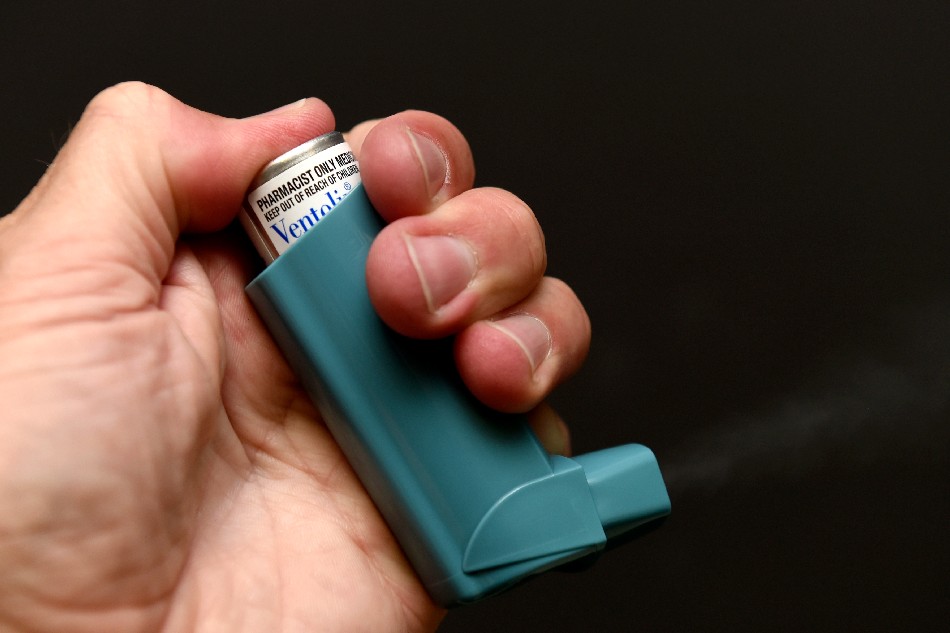Covid infections lower in people with food allergies – and not higher in asthmatics: study
ADVERTISEMENT

Welcome, Kapamilya! We use cookies to improve your browsing experience. Continuing to use this site means you agree to our use of cookies. Tell me more!
Covid infections lower in people with food allergies – and not higher in asthmatics: study
Zhuang Pinghui in Beijing,
South China Morning Post
Published Jun 07, 2022 07:40 AM PHT
- Researchers find infected households with asthmatic individuals are not at increased risk of transmission
- Children under 12 years of age are just as susceptible as teenagers and adults, but most have no symptoms, research shows
- Researchers find infected households with asthmatic individuals are not at increased risk of transmission
- Children under 12 years of age are just as susceptible as teenagers and adults, but most have no symptoms, research shows
People with food allergies are less likely to be infected with the virus that causes Covid-19 and those with asthma do not necessarily have a higher risk of infection, a study in the United States has found.
People with food allergies are less likely to be infected with the virus that causes Covid-19 and those with asthma do not necessarily have a higher risk of infection, a study in the United States has found.
The Human Epidemiology and Response to Sars-CoV-2 (Heros) study, funded by the National Institutes of Health (NIH) to determine rates of infection in children and their families in the US, also found that under-12s were just as susceptible to infection as teenagers and adults, but most were asymptomatic.
The Human Epidemiology and Response to Sars-CoV-2 (Heros) study, funded by the National Institutes of Health (NIH) to determine rates of infection in children and their families in the US, also found that under-12s were just as susceptible to infection as teenagers and adults, but most were asymptomatic.
The study enrolled 4,142 participants from nearly 1,400 households with at least one child below 13 years old or a family member aged between 13 and 21. The findings were published in the Journal of Allergy and Clinical Immunology last week.
The study enrolled 4,142 participants from nearly 1,400 households with at least one child below 13 years old or a family member aged between 13 and 21. The findings were published in the Journal of Allergy and Clinical Immunology last week.
The participants were drawn from NIH-funded studies focused on allergic diseases from 12 US cities and provided nasal swabs every two weeks between May 2020 and February 2021.
The participants were drawn from NIH-funded studies focused on allergic diseases from 12 US cities and provided nasal swabs every two weeks between May 2020 and February 2021.
ADVERTISEMENT
Asthma was self-reported by 22 per cent of carers and 32 per cent of children and teenagers. One or more atopic conditions, other than asthma, were self-reported by more than half of carers and children, including food allergy, eczema, and upper respiratory allergy such as hay fever and allergic rhinitis. Atopic conditions are sensitivities to allergies.
Asthma was self-reported by 22 per cent of carers and 32 per cent of children and teenagers. One or more atopic conditions, other than asthma, were self-reported by more than half of carers and children, including food allergy, eczema, and upper respiratory allergy such as hay fever and allergic rhinitis. Atopic conditions are sensitivities to allergies.
In total, 147, or 10.5 per cent of households, experienced one or more Sars-CoV-2 infections, with a 25.8 per cent probability of household infection during the study period.
In total, 147, or 10.5 per cent of households, experienced one or more Sars-CoV-2 infections, with a 25.8 per cent probability of household infection during the study period.
The analysis found no association between infection risk and asthma in children, adults or the obese. Infected households with asthmatic individuals were not at increased risk of transmission, the study found.
The analysis found no association between infection risk and asthma in children, adults or the obese. Infected households with asthmatic individuals were not at increased risk of transmission, the study found.
However, participants with food allergies - who made up 31 per cent of adults, 28 per cent of teenagers, and 40 per cent of all children in the study - were at a 50 per cent lower risk of infection.
However, participants with food allergies - who made up 31 per cent of adults, 28 per cent of teenagers, and 40 per cent of all children in the study - were at a 50 per cent lower risk of infection.
The researchers made no conclusions on the association, but said self-reporting could have led to a misclassification of some participants, while inclusion of non-food allergies would be more likely to lead to a false-negative in the food allergy group.
The researchers made no conclusions on the association, but said self-reporting could have led to a misclassification of some participants, while inclusion of non-food allergies would be more likely to lead to a false-negative in the food allergy group.
ADVERTISEMENT
They speculated that a specific type of immune response common in people with food allergies might reduce levels of Angiotensin-Converting Enzyme 2 (ACE2) - the main receptor for the virus - in the airway, lowering the risk of infection.
They speculated that a specific type of immune response common in people with food allergies might reduce levels of Angiotensin-Converting Enzyme 2 (ACE2) - the main receptor for the virus - in the airway, lowering the risk of infection.
"Supporting this possibility, we found significantly greater levels of general atopy among those with self-reported food allergy, relative to both those without food allergy, and even those with asthma," they wrote.
"Supporting this possibility, we found significantly greater levels of general atopy among those with self-reported food allergy, relative to both those without food allergy, and even those with asthma," they wrote.
The researchers also found a similar probability of infection among participants of all ages, with a high transmission risk in households with children, 75 per cent of whom remained asymptomatic.
The researchers also found a similar probability of infection among participants of all ages, with a high transmission risk in households with children, 75 per cent of whom remained asymptomatic.
However, they did identify an association between household infection and age, with an increased risk of infection among older children or younger carers.
However, they did identify an association between household infection and age, with an increased risk of infection among older children or younger carers.
For every year of increase in the average age of children and teenagers within a household, there was a 7 per cent increase in household infection risk. In contrast, every five-year increase in average age of household carers was associated with a 14 per cent decrease in household infection risk.
For every year of increase in the average age of children and teenagers within a household, there was a 7 per cent increase in household infection risk. In contrast, every five-year increase in average age of household carers was associated with a 14 per cent decrease in household infection risk.
ADVERTISEMENT
The researchers did not study how the conditions were associated with the severity of Covid-19 because nearly all infections were not severe, and many were asymptomatic.
The researchers did not study how the conditions were associated with the severity of Covid-19 because nearly all infections were not severe, and many were asymptomatic.
"We could not assess asthma as a risk factor for severe disease, nor did we assess the severity and management of asthma and respiratory allergic disease in this report," they wrote.
"We could not assess asthma as a risk factor for severe disease, nor did we assess the severity and management of asthma and respiratory allergic disease in this report," they wrote.
The study was largely conducted before the arrival of Covid-19 vaccinations and ahead of the spread of variants of concern, from Alpha to Omicron. The researchers said it was unclear how the findings would translate to the current Covid-19 situation.
The study was largely conducted before the arrival of Covid-19 vaccinations and ahead of the spread of variants of concern, from Alpha to Omicron. The researchers said it was unclear how the findings would translate to the current Covid-19 situation.
Copyright (c) 2022. South China Morning Post Publishers Ltd. All rights reserved.
Copyright (c) 2022. South China Morning Post Publishers Ltd. All rights reserved.
ADVERTISEMENT
ADVERTISEMENT



